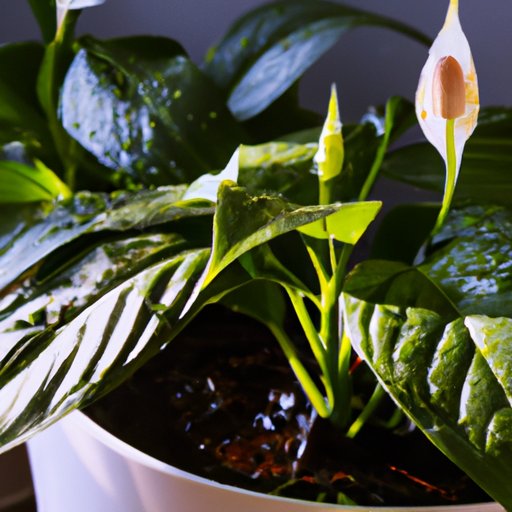Introduction
The peace lily (Spathiphyllum spp.) is a popular houseplant, valued for its graceful foliage and beautiful white blooms. While it is relatively easy to care for, understanding the needs of a peace lily is key to keeping it healthy and thriving. In this article, we will explore the basics of caring for a peace lily indoors.
Adequate Light
Peace lilies prefer bright, indirect sunlight. When kept in the right environment, the leaves can reach up to 24 inches in length. If sunlight is too direct or too intense, the leaves may scorch or develop brown tips. To avoid this, position the plant away from windows that receive direct sun. A few hours of morning or late afternoon sun is ideal.
Well-Draining Soil
Peace lilies are sensitive to overwatering and need well-draining soil. The best soil mix is a combination of potting soil and perlite. This allows excess water to drain quickly, preventing root rot. Avoid using soil mixes with high amounts of peat moss, as this tends to retain too much moisture. In addition, it’s important to use a pot with drainage holes at the bottom to ensure proper drainage.
Regular and Even Watering
Peace lilies should be watered when the top inch of soil is dry. Water the plant until the excess begins to drip from the bottom of the pot. It’s important to not let the soil become overly dry or soggy, as both conditions can cause stress to the plant. Generally, peace lilies should be watered every 7-10 days.
Fertilizing
Peace lilies benefit from regular fertilizing. Use a balanced fertilizer, such as 20-20-20, once a month during the growing season (spring and summer). During the winter months, fertilize only once every other month. Be sure not to over-fertilize, as this can cause damage to the roots.
Pruning
Peace lilies don’t require pruning, but it’s beneficial to remove dead leaves and flowers as they appear. This encourages new growth and keeps the plant looking healthy. When pruning, use clean, sharp scissors and make sure to cut just above the leaf node.
Temperature and Humidity
Peace lilies are comfortable in temperatures between 60°F and 80°F. They also prefer humid environments, so if the air in your home is dry, consider misting the leaves regularly or placing the plant near a humidifier. Additionally, you can group plants together to increase humidity.
Repotting
Peace lilies should be repotted every 2-3 years, or when the roots have outgrown the pot. When selecting a new pot, choose one that is slightly larger than the current one. Make sure the pot has drainage holes and is filled with well-draining soil. After repotting, water the plant thoroughly and allow it to drain before returning it to its spot.
Conclusion
Peace lilies are beautiful and low-maintenance houseplants. With adequate light, well-draining soil, regular and even watering, fertilizing, pruning, and repotting, you can keep your peace lily healthy and thriving indoors. With the right care, your peace lily will bring life and beauty to your home for many years to come.


